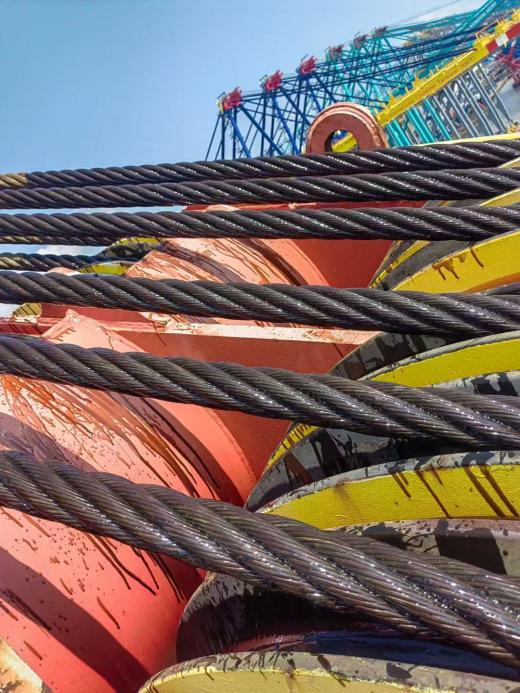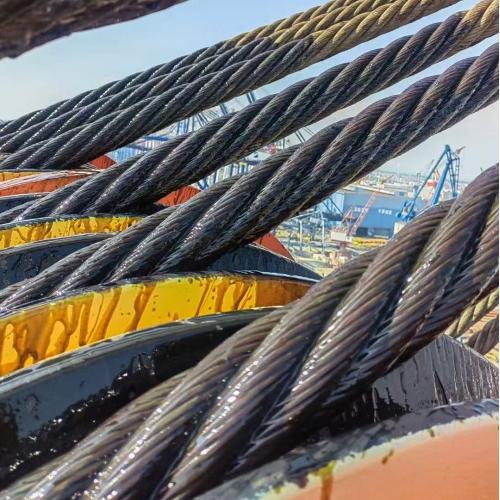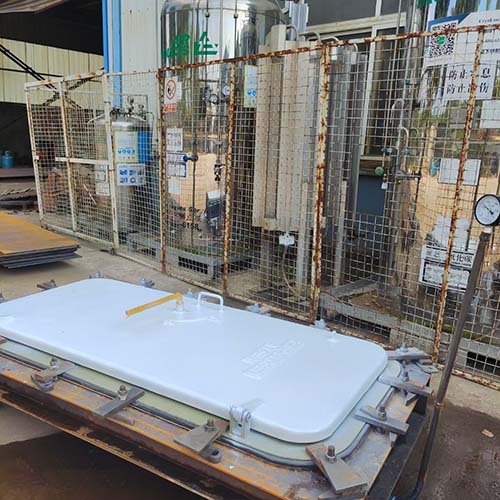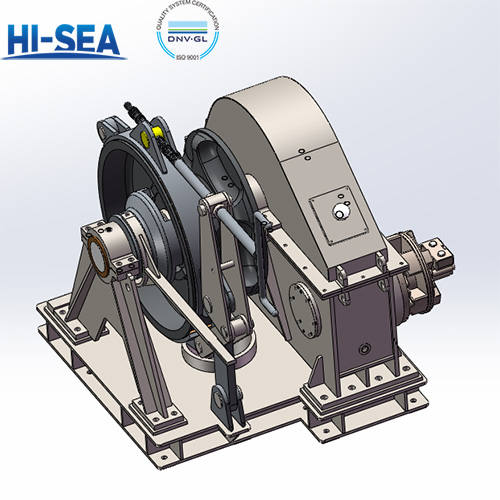
The Impact of Lubrication Methods (Internal Oil Immersion / External Lubrication) on Marine Wire Rope Lifespan
Wire ropes used in ships and port machinery are constantly exposed to the harsh marine environment characterized by high salt spray, high humidity, and high-load alternating stresses. Their failure modes often manifest as a combined effect of internal corrosion-induced fracture and surface wear. Lubrication, being the core of wire rope maintenance, plays a decisive role in rope lifespan. The choice of lubrication method (internal oil immersion vs. External lubrication) is critical. These two methods are not mutually exclusive but complementary, working together to build the rope's protection system.
Overview
I. Internal Oil Immersion Lubrication: Deep-Seated Life Support
Process: During rope manufacturing, the core (fiber core FC or wire strand core WSC/IWRC) or strand core is thoroughly soaked and impregnated in specialized lubricating oil. Alternatively, specialized lubricating oil is continuously injected into the center of the strands during closing.
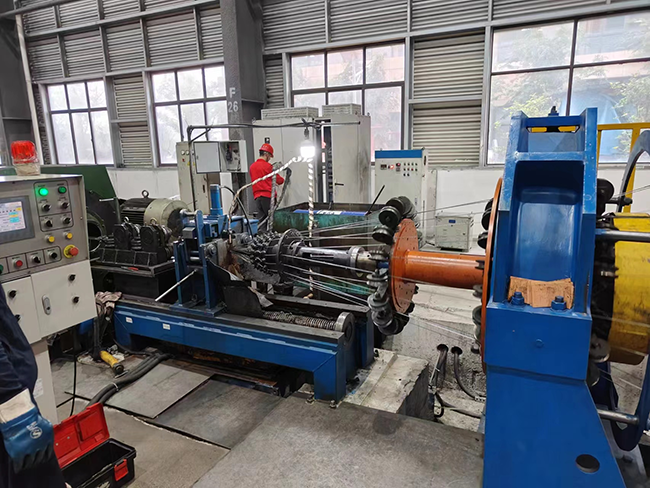
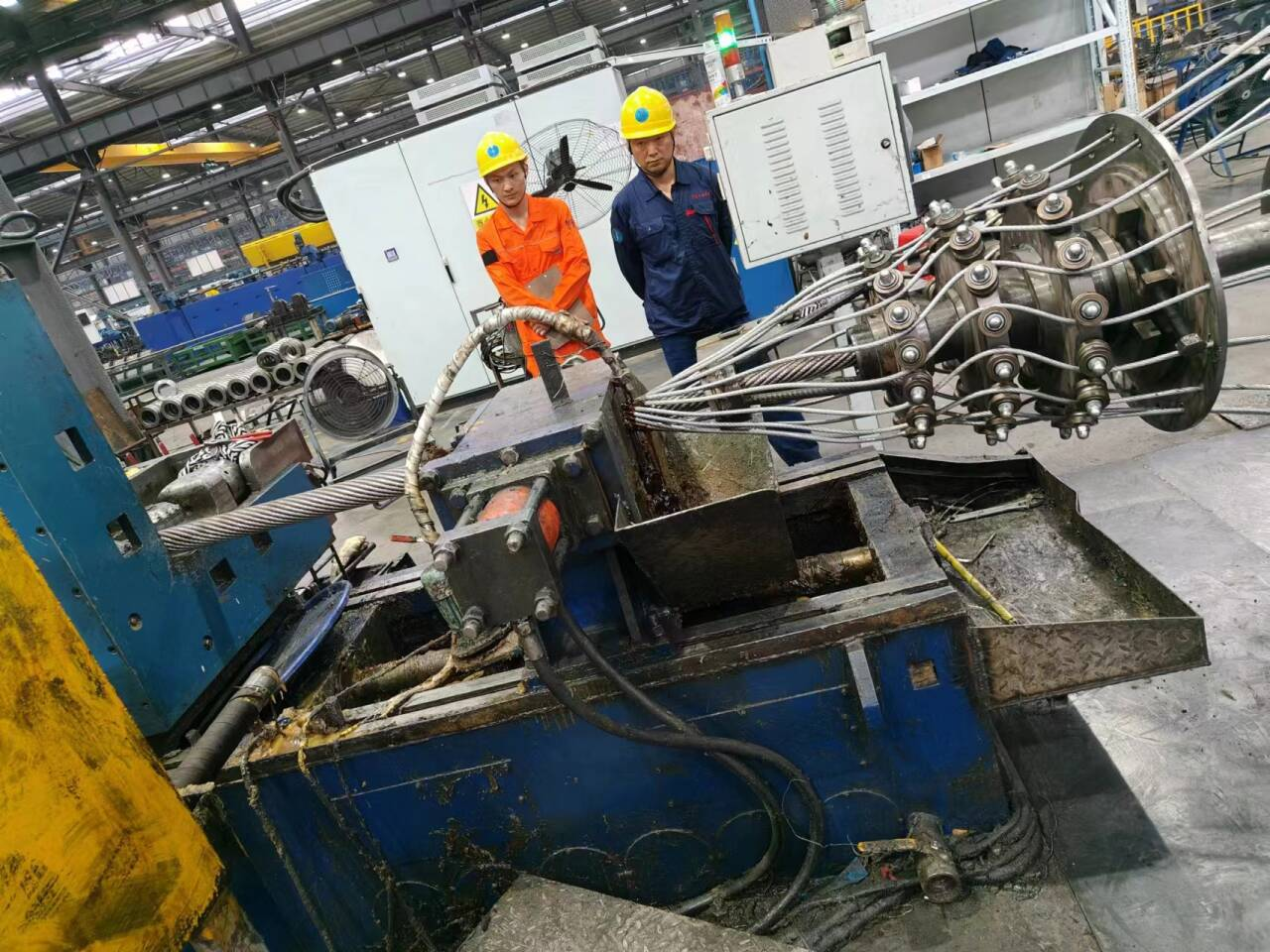
Core Functions:
1. Suppress Internal Fretting Wear: This is the primary task of internal lubrication. During bending, tensioning, and vibration, minute relative movements (fretting) occur between internal wires. Dry friction generates debris and accelerates wear. The internal oil film significantly reduces the friction coefficient, absorbs impact energy, and effectively prevents the initiation and progression of fretting wear – a key factor in extending fatigue life.
2. Prevent Internal Corrosion: Lubricating oil fills the internal voids of the strands, isolating the wires from moisture and corrosive agents (e.g., seawater, acid mist), protecting internal wires from rust. Internal corrosion is often insidious and highly damaging.
3. Mitigate Stress Corrosion Cracking: Under the combined action of a corrosive environment and tensile stress, good internal lubrication reduces the risk of stress corrosion cracking in the wires.
Impact on Lifespan:
1. Significantly Extends Fatigue Life: Reducing internal fretting wear is the most effective means of enhancing the fatigue life of wire ropes, especially under bending conditions. Studies show that adequate internal lubrication can increase fatigue life by 30% or more compared to dry ropes.
2. Ensures Long-Term Corrosion Protection: Even if the external coating is damaged or depleted, internal immersion oil can protect the core wires for a considerable period, preventing sudden breakage due to internal corrosion.
Advantages & Disadvantages:
Advantages: Protection reaches the core, long-lasting effect, irreplaceable.
Disadvantages: Complex process, higher cost; may increase rope weight; generally non-replenishable (fiber core ropes offer limited slow-release capability); cannot be applied to ropes already in service.
II. External Lubrication: The Surface Protective Barrier
Process: Applying grease onto the surface of the finished wire rope.
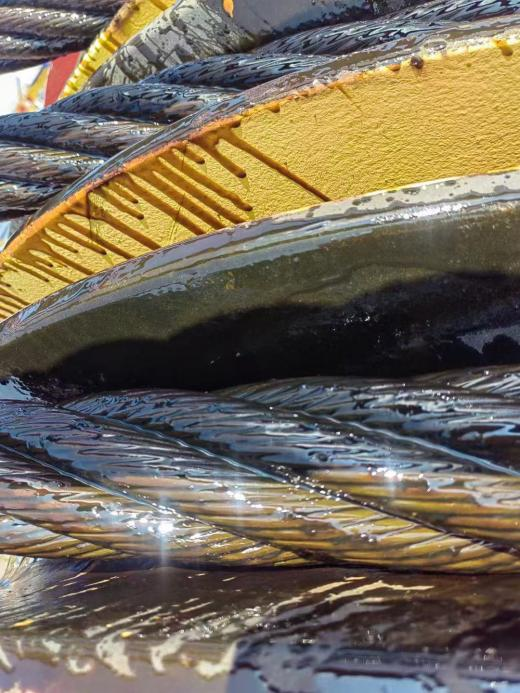
Core Functions:
1. Reduce External Friction: Provides lubrication during contact between the wire rope and sheaves, drums, or external structures, lowering friction resistance and surface wear.
2.Prevent External Corrosion: Forms a physical barrier on the rope surface, blocking direct attack by moisture, oxygen, salt spray, and chemicals on the outer wires.
3. Sealing Effect: Helps reduce the loss of internal lubricant and prevents ingress of external contaminants (e.g., wear debris, dust) into the interstices between strands.
4. Auxiliary Lubrication: Some high-quality external greases can penetrate slightly into the strand interstices via capillary action when the rope deforms under load (effect is limited).
Impact on Lifespan:
1. Reduces External Wear: Effectively minimizes friction loss between the rope body and guide rollers or ground surfaces, protecting the outer wires.
2. Prevents Surface Corrosion: Serves as the first line of defense against environmental corrosion, preventing early failure due to surface rust.
3. Preserves Internal Lubrication: Slows down the rate at which internal lubricant is lost due to squeezing and centrifugal forces.
4. Improves Operational Efficiency: Reduced friction contributes to smoother equipment operation and lower energy consumption.
Advantages & Disadvantages:
Advantages: Easy application (new ropes come pre-coated; old ropes can be periodically re-lubricated); relatively low cost; visually verifiable; allows selection of lubricants with different properties (e.g., water-resistant, high-temperature resistant, extreme pressure resistant) based on operating conditions.
Disadvantages: Protection is primarily limited to the surface and near-surface layers; susceptible to loss, degradation, and failure due to mechanical abrasion, UV exposure, high temperatures, solvents, etc.; requires regular maintenance and replenishment; cannot address internal fretting wear issues.
III. Synergistic Effect of Lubrication Methods for Maximum Lifespan
Internal oil immersion provides long-lasting internal protection, while the external coating protects the internal lubricant from rapid depletion and simultaneously provides external lubrication and a corrosion barrier. Working together, they maximize the ability to:
- Inhibit fretting wear (primarily internal).
- Resist overall corrosion (internal and external combined).
- Reduce external friction loss (primarily external).
- Extend fatigue life and total service life.
IV. Application and Maintenance Recommendations
- Rope Selection: Choose wire ropes with adequate internal oil immersion based on the application scenario (corrosiveness, bending frequency, load, temperature, etc.). Internal immersion is essential for severe environments (e.g., offshore, mining, chemical).
- Initial Protection: The external coating applied at the factory is the rope's initial protective layer. Protect it during installation to avoid scraping by hard objects or contact with solvent-based chemicals.
- Regular Maintenance: Establish a strict external lubrication maintenance schedule. Determine the re-lubrication frequency (e.g., monthly, quarterly) based on usage intensity, environment, and observed coating condition (dryness, cracking, loss, contamination).
- Cleaning: Remove old grease and dirt before re-lubrication (use dedicated cleaners or tools, avoiding wire damage).
- Grease Selection: Use wire rope-specific lubricating grease with good adhesion, penetration, water resistance, rust prevention, and extreme pressure properties. Consult the manufacturer if necessary.
- Application Method: Ensure grease is applied evenly and penetrates into the strand interstices (use brushing, drip application, pressure lubricators, etc.). Avoid merely coating the surface.
- Monitoring: Regularly inspect the rope's condition (broken wires, wear, corrosion, deformation, etc.). Lubrication status is a critical inspection item. Lubrication failure is often an early warning sign of impending failure.
